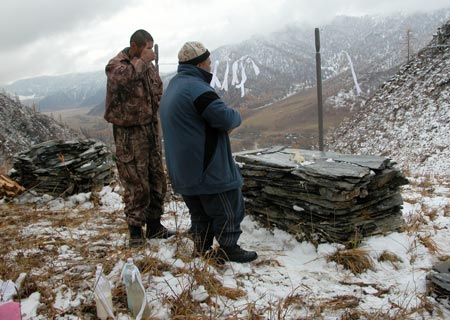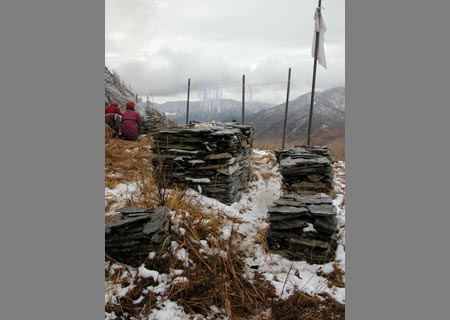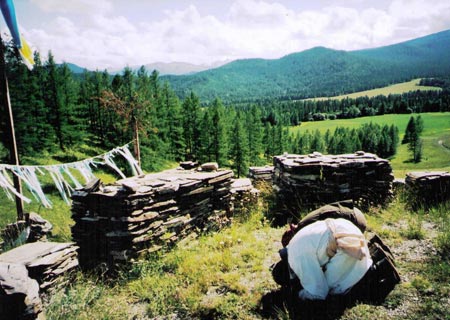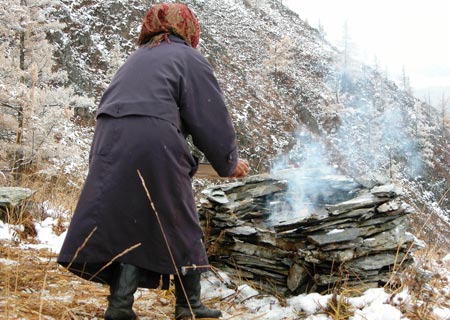Sensing “Place”: Performance, Oral Tradition, and Improvisation in the Hidden Temples of Mountain Altai
- Volume 27, Number 2
- Carole Pegg, Elizaveta Yamaeva
- View PDF | Download PDF
- http://journal.oraltradition.org/issues/27ii/pegg-yamaeva
Abstract
This article suggests that during two Ak Jang (“White Way”) Sary Bür (“Yellow Leaves”) rituals in hidden open-air temples in Mountain Altai, kaleidoscopic relations are created through bodily movements, oral poetry, epic, and song. These components stimulate three interrelated senses of “place” for participants: a topographical, indigenous “place of gatherings;” a numinous interactive spiritual place; and a situational “being-in-place” that serve to strengthen personhood and enable personal transitions in the face of difficult contemporary political and natural change.
eCompanion
Valentina Todoshevna Chechaeva and Elena Tӧlӧsӧvna Mandaeva singing a ritual jangar song, Kulady, 2010.
Photo: Carole Pegg


Female participants circumambulating between outer and inner tagyl altar crescents after purifying and tying up a kyira ribbon. Lower Talda küree, 2010.
Photo: Carole Pegg
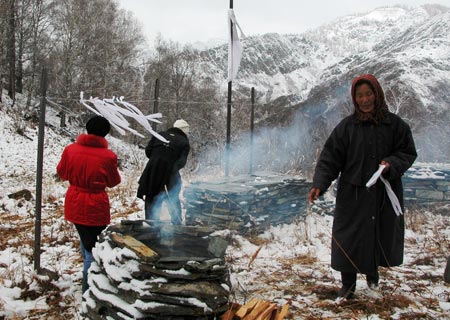

Arzhan jarlyk reciting blessing-fortune (alkysh-byian) verses while sprinkling milk, his “helper” stroking his head.
Photo: Carole Pegg
